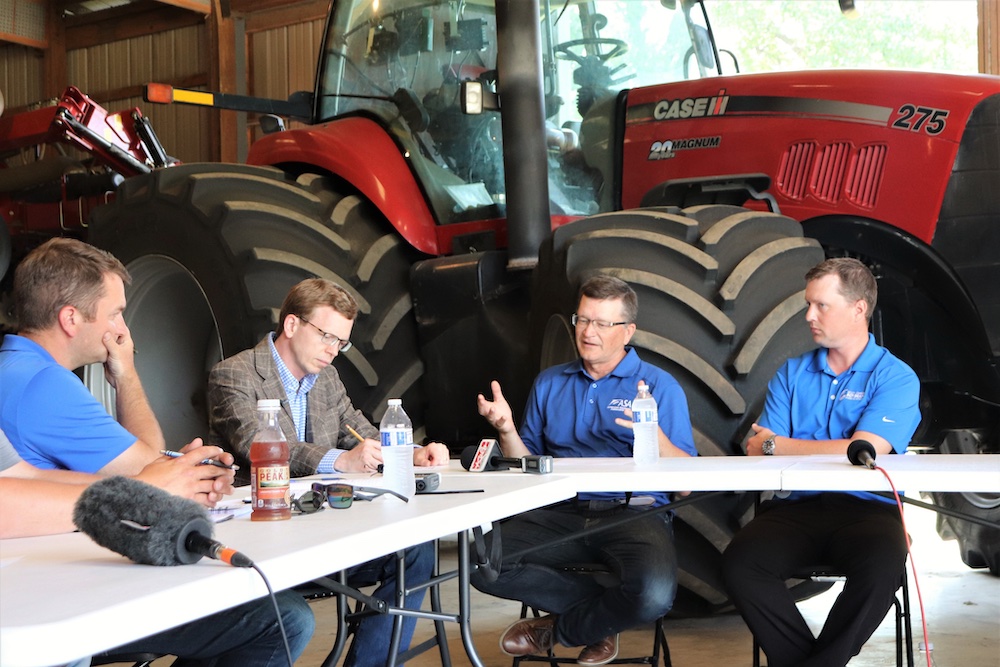While Congressman Dusty Johnson hollers to protect the ag-industrial complex, President Joe Biden is working on America’s part of the global “30 by 30” plan, which would place at least 30 percent of land into “conserved” status by 2030.

The colonizing powers use the trope that “Farmers are the very best conservationists” to defend their heedless exploitation of the land. But the best conservationists, according to the Indigenous and Community Conserved Area (ICCA) Consortium, actually appear to be the indigenous folks who haven’t been forced to cede their land to the rapacious Euro-monoculturalists:
Academic research supports the idea that much of the natural habitat within Indigenous land is conserved. One study, for example, found that Indigenous territories harbored more biodiversity than protected areas in Brazil, Australia, and Canada. Another found that at least 36 percent of the world’s remaining intact forest landscapes — continuous tracts of forest and other natural ecosystems — are found within Indigenous territories.
Research has also shown that in some regions, Indigenous control of lands seems to reduce deforestation as much as formal protections, or even more. “Biodiversity is declining more slowly in areas managed by [Indigenous peoples and local communities] than elsewhere,” more than 20 researchers argued in a recent perspective article in the journal Ambio.
While different Indigenous and local groups have different cultures and practices, they tend to share a holistic and human-inclusive view of nature that’s imbued with cultural or spiritual value. It’s this view, in part, that forms the basis for Indigenous land management, which often includes protecting sacred lakes or forests, or creating rules against exploiting certain species [Benji Jones, “Indigenous People Are the World’s Biggest Conservationists, But They Rarely Get Credit for It,” Vox, 2021.06.11].
We could thus boost conservation by giving land back to those original stewards:
Countries could meet their 30 by 30 goals by including areas conserved by Indigenous peoples and local communities, according to the ICCA Consortium. And a growing body of research shows that one of the best ways to promote conservation is to give legal ownership of land to Indigenous people. Simply acknowledging that much of the world’s intact habitat exists today because — not in spite — of Indigenous peoples would also be helpful, Reyes-García said [Jones, 2021.06.11].
Short of deporting all the white guys and giving the Flandreau Santee Sioux and Sisseton-Wahpeton title to the I-29 corridor, we could at least involve our tribes in conservation policymaking:
The trend of increasing aboriginal management is not just about providing title to new land. The Obama Administration envisioned that Bear’s Ears National Monument in Utah, filled with sacred and other Native cultural sites, would be co-managed by the Department of Interior and a five-tribe coalition. And last fall, a report was published by Martin Nie and Monte Mills, professors of natural resource policy and Indian law respectively at the University of Montana — though acting as private individuals — on the steps needed to overcome barriers and increase co-management of America’s public lands with tribes, especially changes in federal law that would require agencies to work with tribes on a co-management basis.
Now, with Native American Deb Haaland at the helm of the Interior Department, the movement toward co-management of public lands with the tribes, if not outright transfer, is expected to gain steam. President Biden has pledged to listen to and work with Native tribes in the West as he moves to protect more public land and, especially, as he moves to fulfill his promise to protect 30 percent of the U.S. by 2030, the 30×30 plan [Jim Robbins, “How Returning Lands to Native Tribes Is Helping Protect Nature,” Yale Environment 360, 2021.06.03].
We all live on the land. We all benefit from land management that views the land as our home, not a factory. Indigenous people can bring that healthy mindset to land stewardship.
Related Reading: The biggest farmers in America are Bill and Melinda Gates. The splitting couple has packed its portfolio with 269,000 acres of cropland (a tiny fraction of America’s 911 million farm acres) mostly to make money, not make substantive changes in conservation practices:
One Georgia farmer and environmental advocate, John Quarterman, told NBC that while he expected that Gates would encourage more sustainable practices after buying farmland nearby, his acquisition of that land didn’t change much. And the National Farmers Union has suggested that the growing number of non-farmer owners like Gates buying up farmland — and renting it out — could lead to practices that hurt the environment: Short-term farmers who rent land are less likely to take long-term conservation steps, the organization argues, and non-farmer owners don’t have the experience to “understand the importance of protecting natural resources” [Rebecca Heilweil, “The Controversy over Bill Gates Becoming the Largest Private Farmland Owner in the US,” Vox: Recode, 2021.06.11].
Gates is the worst thing that’s happened to the environment in years. He’s trying to foist a nuclear plant on Wyoming to make up for closing coal plants. I’d rather have the coal plants spewing carbon dioxide than the uranium mining and nuclear waste problems of his nuclear nightmare. The best thing would be to turn those mines into solar arrays and to use Gates as mulch to reclaim the mines.